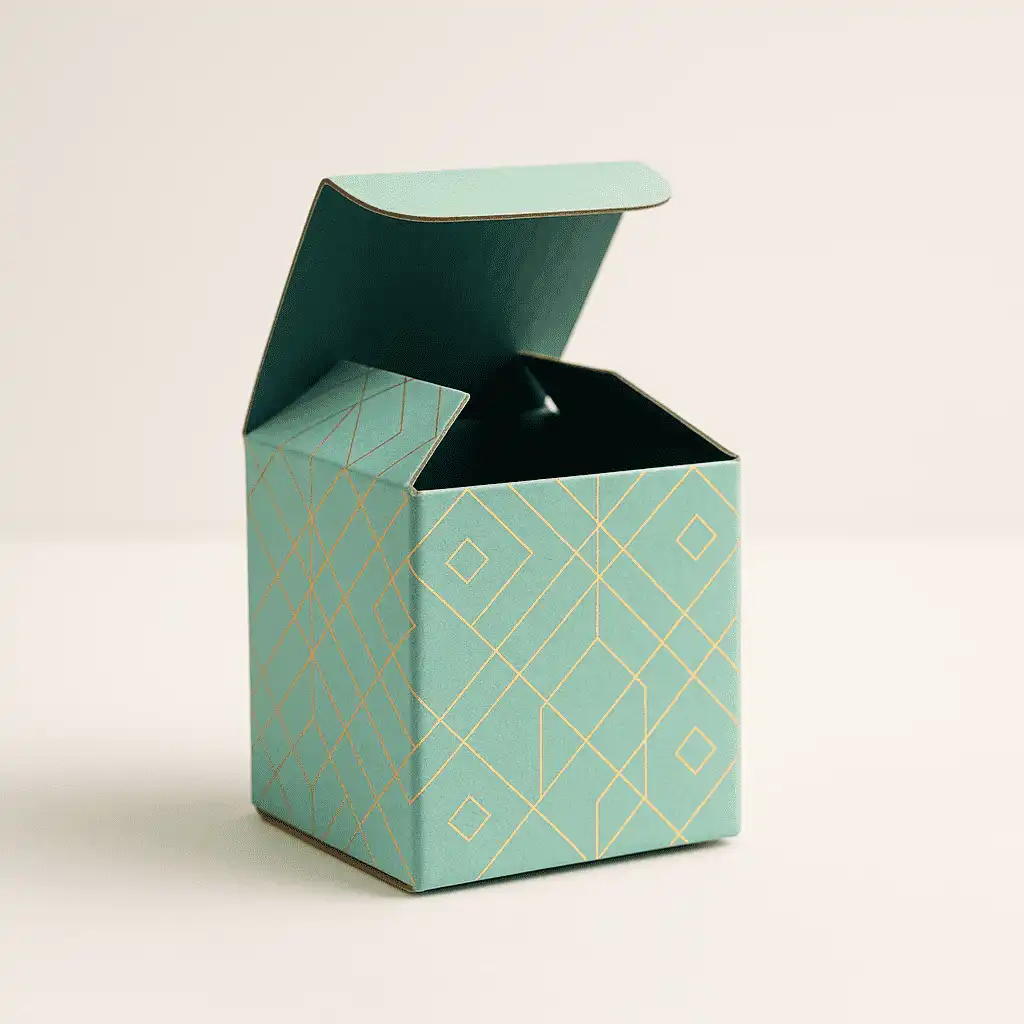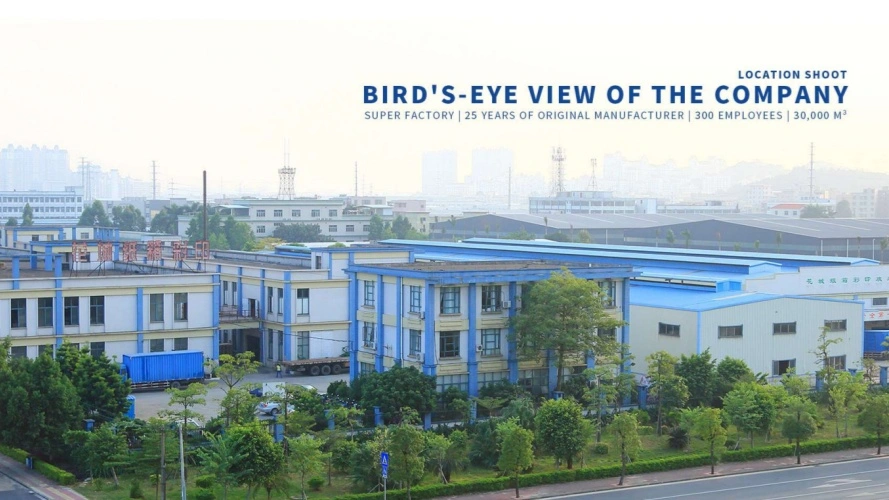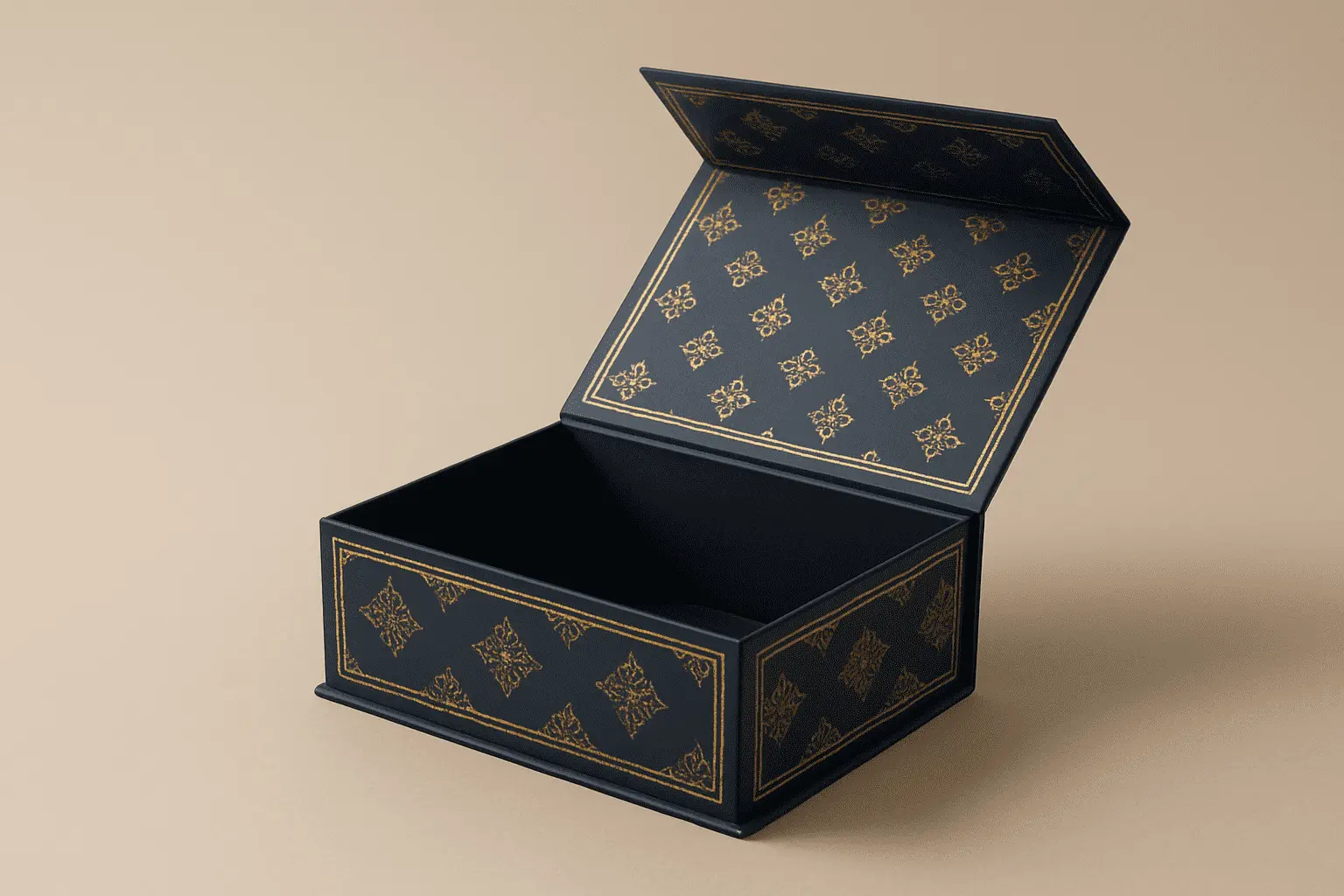6 Premium Packaging Finishes: A Guide To Elevating Your Brand Experience
In today's competitive marketplace, the first impression your product makes can determine its success or failure. Premium packaging finishes have emerged as a critical differentiator that transforms ordinary product boxes into powerful brand ambassadors. These sophisticated surface treatments and decorative techniques don't just protect your products—they create memorable unboxing experiences that resonate with consumers long after purchase. From luxury cosmetics to high-end electronics, brands across industries are discovering that investing in premium packaging finishes yields significant returns through enhanced perceived value, increased customer loyalty, and stronger brand recognition. The art of packaging has evolved beyond mere functionality to become a strategic marketing tool that communicates quality, craftsmanship, and attention to detail. Understanding and implementing the right combination of premium finishes can elevate your product box from simple container to brand experience catalyst.

Hot Foil Stamping: The Golden Touch of Luxury
Hot foil stamping represents one of the most prestigious and visually striking premium packaging finishes available in modern manufacturing. This sophisticated process involves applying metallic or colored foil to specific areas of your product box using heat and pressure, creating stunning visual effects that immediately communicate luxury and quality. The technique works by heating a metal die that presses foil onto the packaging surface, transferring the foil's reflective properties to create eye-catching accents, logos, or text elements. The versatility of hot foil stamping makes it particularly valuable for brands seeking to differentiate their product boxes in crowded retail environments. Gold foil remains the most popular choice for luxury applications, instantly conveying premium positioning and sophistication. Silver foil offers a more contemporary, sleek appearance that works exceptionally well for technology and cosmetic brands. Beyond traditional metallic options, colored foils in rose gold, copper, and holographic finishes provide unique branding opportunities that align with specific brand aesthetics. Manufacturing considerations for hot foil stamping require careful attention to substrate selection and design complexity. Paperboard weights of 300g to 400g provide optimal results, offering sufficient stability for the heat and pressure application while maintaining structural integrity. The process works particularly well on smooth, coated surfaces where the foil can achieve maximum adhesion and visual impact. Design elements should be carefully planned to maximize the dramatic effect while considering cost implications, as larger foil coverage areas increase production expenses. When executed properly, hot foil stamping transforms standard product boxes into premium packaging that commands higher perceived value and justifies premium pricing strategies.
Cold Foil Stamping: Modern Efficiency Meets Premium Appeal
Cold foil stamping has revolutionized premium packaging production by combining the visual appeal of traditional hot stamping with improved efficiency and environmental benefits. Unlike its hot counterpart, cold foil stamping uses adhesive technology to transfer foil materials onto product box surfaces without requiring heat application. This innovative process allows for faster production speeds, reduced energy consumption, and the ability to incorporate foil effects into larger print runs without significant cost penalties. The technical advantages of cold foil stamping make it particularly attractive for brands requiring both premium aesthetics and operational efficiency. The process integrates seamlessly with conventional printing workflows, allowing manufacturers to apply foil effects during the same pass as standard printing processes. This integration reduces handling requirements, minimizes registration issues, and enables more complex design combinations that would be challenging or cost-prohibitive with traditional hot stamping methods. Design flexibility represents another significant advantage of cold foil applications on product boxes. The process enables fine detail reproduction, gradient effects, and intricate pattern work that enhances brand storytelling through packaging. Brands can achieve sophisticated metallic accents on typography, incorporate foil into photographic elements, or create subtle textural contrasts that add depth and interest to packaging designs. The ability to combine cold foil with other premium finishes like UV coating or embossing creates layered effects that elevate the overall packaging experience. Environmental considerations increasingly influence packaging decisions, and cold foil stamping offers notable sustainability advantages. The process generates less waste heat, reduces energy consumption during production, and often enables the use of more environmentally friendly adhesive systems. For brands committed to sustainable packaging practices while maintaining premium positioning, cold foil stamping provides an ideal balance between visual impact and environmental responsibility.
UV Coating: High-Gloss Protection and Visual Impact
UV coating technology has become an essential premium finish for product boxes requiring both enhanced visual appeal and superior protection. This advanced coating process uses ultraviolet light to instantly cure liquid coatings applied to packaging surfaces, creating durable, high-gloss finishes that protect against scuffing, moisture, and handling damage while dramatically enhancing visual appeal. The immediate curing process eliminates traditional drying time requirements, enabling faster production turnaround and reducing manufacturing bottlenecks. The protective benefits of UV coating make it particularly valuable for product boxes that experience significant handling during distribution and retail display. The cured coating creates a hard, resilient surface that maintains its appearance throughout the supply chain, ensuring products reach consumers in pristine condition. This durability directly translates to enhanced brand perception, as damaged or worn packaging can negatively impact consumer confidence and purchase decisions. Visual enhancement through UV coating offers multiple aesthetic options for premium packaging applications. Full-coverage UV coating creates mirror-like surfaces that intensify colors and graphics, making product boxes appear more vibrant and luxurious. Spot UV applications enable selective coating of specific design elements, creating contrast between glossy and matte areas that adds sophisticated visual interest. This selective approach allows brands to highlight logos, product names, or key messaging while maintaining subtle elegance in overall design execution. Technical considerations for UV coating implementation require careful attention to substrate preparation and design compatibility. Paperboard selections in the 300g to 400g range provide optimal results, offering sufficient stability for the coating application while maintaining structural integrity. Design elements should account for the reflective properties of UV coating, ensuring text readability and image clarity under various lighting conditions. The coating's interaction with other premium finishes requires careful planning to achieve desired visual effects without compromising functionality or appearance.
Frosted Touch Finishes: Sophisticated Tactile Experience
Frosted touch finishes represent a sophisticated approach to premium packaging that engages consumers through tactile sensation while creating distinctive visual appeal. This innovative surface treatment transforms standard product box surfaces into soft-touch experiences that communicate quality and attention to detail through physical interaction. The finish combines visual elegance with sensory engagement, creating memorable unboxing experiences that strengthen brand connections and encourage positive associations. The psychological impact of tactile packaging finishes cannot be understated in modern consumer behavior. Research consistently demonstrates that physical texture influences purchase decisions and brand perception, with soft-touch finishes generally associated with premium quality and luxury positioning. When consumers handle product boxes with frosted touch finishes, the sensory experience creates positive emotional responses that extend beyond visual appeal alone. This multi-sensory engagement strengthens brand memory and increases the likelihood of repeat purchases. Manufacturing frosted touch finishes requires specialized coating technologies that create controlled surface textures while maintaining durability and appearance consistency. The process typically involves applying specialized varnishes or coatings that cure to create the desired tactile properties. Quality control becomes particularly important with frosted finishes, as texture consistency across production runs directly impacts the premium perception these finishes are designed to create. Substrate selection plays a crucial role, with heavier paperboard weights (350g to 400g) providing better dimensional stability and finish adhesion. Design integration with frosted touch finishes requires careful consideration of how texture interacts with graphics, typography, and other packaging elements. The finish can enhance or detract from printed elements depending on application strategy. Selective application creates interesting contrast opportunities, allowing brands to combine smooth and textured areas for maximum impact. Color interaction with frosted finishes also requires attention, as the texture can affect color perception and saturation. When properly executed, frosted touch finishes transform ordinary product boxes into premium packaging that communicates quality through every interaction.
Embossing and Debossing: Dimensional Brand Storytelling
Embossing and debossing techniques create three-dimensional effects on product box surfaces that add sophisticated visual and tactile elements to premium packaging. These complementary processes use specially crafted dies and pressure to raise (emboss) or lower (deboss) specific design elements, creating dramatic shadows, highlights, and textural contrasts that enhance brand storytelling capabilities. The dimensional quality achieved through these techniques cannot be replicated through printing alone, making them valuable tools for brands seeking truly distinctive packaging experiences. The versatility of embossing and debossing enables a wide range of creative applications on product boxes. Logo embossing creates prominent brand identification that remains visible even without ink application, providing subtle branding that appeals to consumers who appreciate understated luxury. Text debossing can create elegant, sophisticated typography that invites touch and closer examination. Pattern work through these techniques adds textural interest that enhances overall packaging appeal while providing opportunities for brand differentiation through unique surface treatments. Technical execution of embossing and debossing requires careful attention to design parameters and material specifications. Design elements must be optimized for dimensional reproduction, with appropriate line weights, spacing, and detail levels that translate effectively to three-dimensional form. Paperboard selection becomes critical, as substrates must possess sufficient thickness and fiber structure to accept dimensional forming without cracking or tearing. Weights between 350g and 400g typically provide optimal results, offering the structural integrity necessary for clean dimensional reproduction while maintaining overall packaging functionality. Production planning for embossed and debossed product boxes requires coordination between design, tooling, and manufacturing processes. Custom die creation represents a significant initial investment that becomes more cost-effective with larger production volumes. The dimensional nature of these finishes also impacts packaging assembly, shipping, and storage considerations, as raised or lowered surfaces may require modified handling procedures. However, when properly planned and executed, embossing and debossing create premium packaging experiences that justify higher price points and strengthen brand positioning in competitive markets.
Multi-Layer Finishing Combinations: Orchestrating Premium Effects
The most sophisticated premium packaging achieves its impact through carefully orchestrated combinations of multiple finishing techniques applied to product boxes. This layered approach creates complex visual and tactile experiences that individual finishes cannot achieve alone. Successfully combining techniques like UV coating with hot foil stamping, or embossing with frosted touch finishes, requires deep understanding of how different processes interact and complement each other to create cohesive premium experiences. Strategic layering of premium finishes enables brands to create unique packaging signatures that become associated with their products and values. A luxury cosmetics brand might combine debossed logos with spot UV coating and metallic foil accents to create packaging that communicates sophistication through multiple sensory channels. Electronics brands often layer matte finishes with selective gloss elements and subtle embossing to convey technological precision and innovation. The key lies in understanding how each finish contributes to the overall brand narrative while ensuring technical compatibility throughout the production process. Manufacturing complexity increases significantly when combining multiple premium finishes on product boxes. Production sequencing becomes critical, as the order of finish application can dramatically affect final results. Some combinations require specialized equipment or additional production steps that impact timelines and costs. Quality control procedures must account for the interaction between different finishes, ensuring consistent results across production runs. Despite these challenges, the visual and tactile impact of well-executed multi-layer finishes often justifies the additional complexity through enhanced brand differentiation and premium positioning. Economic considerations for combination finishes require careful analysis of cost versus benefit relationships. While individual premium finishes add incremental costs to product box manufacturing, combination approaches can create disproportionate value increases that justify significant price premiums. The challenge lies in identifying the optimal combination of finishes that maximizes perceived value while remaining within acceptable cost parameters. Market research and consumer testing play crucial roles in validating finish combinations before committing to large-scale production, ensuring that the premium packaging investment delivers measurable returns through increased sales and brand equity.
Conclusion
Premium packaging finishes represent a strategic investment in brand differentiation that transforms ordinary product boxes into powerful marketing tools. The six finishing techniques explored—hot foil stamping, cold foil stamping, UV coating, frosted touch finishes, embossing and debossing, and multi-layer combinations—each offer unique opportunities to elevate brand experiences and justify premium positioning. Success requires careful integration of aesthetic vision with technical feasibility, ensuring that chosen finishes align with brand values while meeting practical production and cost requirements. As consumer expectations continue to evolve, brands that master the art of premium packaging finishes will maintain competitive advantages through enhanced perceived value and stronger emotional connections with their target audiences.
Ready to transform your product packaging with premium finishes that elevate your brand experience? At Guangzhou Fetching Color Printing & Packaging Ltd., we bring over 20 years of industry expertise and a team of 300+ skilled professionals to every project. Our state-of-the-art 35,000 m² facility houses advanced machinery including KBA106 UV printing systems and specialized finishing equipment that enables us to deliver exceptional results for over 1,000 loyal customers worldwide. Our experienced R&D team of packaging engineers specializes in developing customized solutions that perfectly balance aesthetic appeal with functional performance.
Whether you're looking to implement sophisticated foil stamping, create stunning UV effects, or develop complex multi-layer finishing combinations, our comprehensive capabilities and ISO-certified quality systems ensure your vision becomes reality. We offer free 3D mockups, competitive MOQs starting at 1,000 pieces, and efficient 15-20 day delivery times that keep your projects on schedule. Our FSC-certified materials and environmentally conscious processes align with modern sustainability requirements while delivering the premium quality your brand deserves.
Don't let ordinary packaging limit your brand's potential. Contact our expert team today to discuss how premium finishing techniques can transform your product boxes into powerful brand ambassadors that drive sales and customer loyalty.
Contact us: public@fetchingprinting.com
References
1. Johnson, M. R., & Chen, L. (2023). "Surface Finishing Technologies in Premium Packaging: A Comprehensive Analysis of Consumer Response and Market Impact." International Journal of Packaging Technology and Science, 45(3), 78-94.
2. Williams, S. A., Thompson, K. E., & Rodriguez, C. M. (2022). "Tactile Marketing: How Premium Packaging Finishes Influence Consumer Behavior and Brand Perception." Journal of Consumer Psychology and Marketing, 38(2), 145-162.
3. Davis, P. L., & Kumar, V. (2023). "Sustainable Premium Packaging: Balancing Environmental Responsibility with Luxury Appeal in Modern Manufacturing." Packaging Innovation Quarterly, 29(4), 203-218.
4. Anderson, R. J., Mitchell, B. K., & Zhang, W. (2022). "Multi-Sensory Packaging Design: Integrating Visual and Tactile Elements for Enhanced Brand Experience." Design Studies International, 67(1), 89-107.

Based on your location and order quantity, you will have the opportunity to receive a limited time free shipping promotion!

Corporate Purpose
